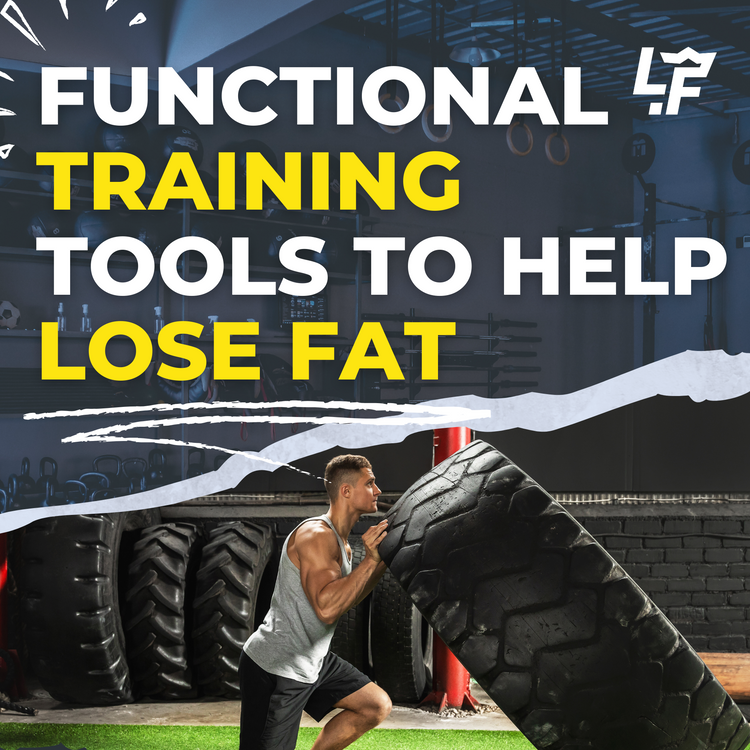Functional Training Exercises: Weight Loss

As I lace up my sneakers, I'm transported back to a pivotal moment in my fitness journey. Picture this: the sun rising, the air filled with determination. It's not just another workout; it's the dawn of my exploration into the transformative world of functional training exercises for weight loss. Weight loss, a universal pursuit, takes on new meaning as I discover the efficiency and sustainability that functional training for weight loss brings. Let me share the unique benefits of blending personal anecdotes with scientific insights, creating a tapestry of understanding that extends far beyond the numbers on the scale.
Caloric Burn and Functional Movements
Functional movements are the heartbeat of this fitness philosophy. It's not just about squats and lunges; it's a symphony of motions engaging multiple muscle groups, igniting a significant caloric burn. Imagine a functional training workout for fat loss where every move contributes to your metabolic rate, creating a sustained calorie expenditure. The scientific foundation is robust: a study in the Journal of Strength and Conditioning Research reveals that functional exercises enhance calorie expenditure during the workout and trigger a prolonged afterburn effect. This post-exercise calorie burn, scientifically known as excess post-exercise oxygen consumption (EPOC), becomes a silent ally in our functional training for fat loss journey.
Unlock the Potential for Effective Fat Burning with High-Intensity Functional Training (HIFT)
As I delved deeper into my fitness routine, High-Intensity Functional Training (HIFT) emerged as a standout method. The research echoes the sentiment: a study in the Journal of Sports Science & Medicine demonstrates not just fat reduction but a tangible improvement in cardiovascular fitness, a beacon of change. It's not just a workout; it's a paradigm shift in how we approach functional training for weight loss and cardiovascular health. HIFT principles, rooted in intensity and purpose, elevate the post-exercise calorie expenditure, as the American Council on Exercise affirmed, making it one of the best functional exercises for weight loss.
Now, envision the dynamic dance of burpees, kettlebell swings, and box jumps – high-intensity functional exercises designed to maximize fat burn, challenging us to redefine our limits. High-Intensity Functional Training (HIFT) encompasses a variety of dynamic and intense exercises that are effective for fat burning.
Here are some exercises commonly associated with HIFT that contribute to effective fat-burning:
Burpees
Burpees are a dynamic full-body exercise that combines a squat, plank, push-up, and jump, making them a staple in high-intensity workouts for fat burning.
How to Do It
- Begin in a standing position
- Drop into a squat
- Kick your feet back into a plank.
- Perform a push-up
- Jump your feet back to the squat position, and explosively jump up.
Benefits: Burpees engage multiple muscle groups, elevate the heart rate for effective calorie burning, and improve cardiovascular endurance.
Variations: Modify by eliminating the push-up or the jump to accommodate different fitness levels.
Want to Try Workout Programs That Burn Fat and Gain Muscle? Get Access to 40+(and counting!) Different Programs + Create Your Own With a Workout Generator! Follow on desktop or mobile!
Kettlebell Swings
Kettlebell swings involve a powerful hip hinge motion, providing a full-body workout and contributing to fat loss through dynamic movements.
How to Do It
- Start with feet shoulder-width apart.
- Hinge at the hips, and swing the kettlebell between your legs.
- Then, ballastically thrust your hips forward, swinging the kettlebell to chest height.
Benefits: Kettlebell swings enhance strength, particularly in the posterior chain, boost cardiovascular fitness, and burn calories effectively.
Variations: Experiment with single-arm swings or increase the weight for added intensity.
Box Jumps
Box jumps are a plyometric exercise that challenges lower-body strength and explosiveness, making them an excellent choice for fat-burning workouts.
How to Do It
- Stand in front of a sturdy box.
- Perform a quarter squat, then explode upward, landing on the box softly with both feet.
Benefits: Box jumps improve leg strength, cardiovascular conditioning, and overall power development.
Variations: Adjust the box height to increase or decrease difficulty or add a challenge by performing consecutive jumps without resting.
Battle Ropes
Battle ropes are a versatile, intense cardio exercise that engages the upper body and core, promoting fat-burning and endurance.
How to Do It
- Hold one end of each rope in each hand
- stand with feet shoulder-width apart.
- Perform a variety of waves, slams, or circles with the ropes.
Benefits: Battle ropes improve grip strength, engage the shoulders, arms, and core, and provide an effective full-body cardio workout.
Variations: Experiment with different wave patterns or incorporate lateral movements for variety.
Rowing Sprints
Rowing sprints on a rowing machine offer a low-impact yet high-intensity cardiovascular exercise that aids in fat-burning and overall fitness.
How to Do It
- Sit on the rower, grab the handle
- Push with your legs, pull with your arms
- Repeat in a rapid, assertive motion.
Benefits: Rowing engages the entire body, especially the back, arms, and legs, contributing to effective calorie burning and improved cardiovascular health.
Variations: Adjust the resistance level or try interval training with alternating high and low-intensity periods.
When performed with proper form and incorporated into a well-rounded workout routine, these exercises contribute significantly to weight loss and overall fitness. As with any exercise program, it's essential to start at an appropriate intensity level and progress gradually.
Want to Try Workout Programs That Burn Fat and Gain Muscle? Get Access to 40+(and counting!) Different Programs + Create Your Own With a Workout Generator! Follow on desktop or mobile!
Creating a Fat-Loss Functional Fitness Plan
Let's craft a blueprint for your journey where functional movements and nutrition harmonize. Imagine a week where squats, lunges, and planks seamlessly intertwine – a symphony of compound movements. The Medicine & Science in Sports & Exercise confirms that incorporating compound movements increases energy expenditure and fat utilization. But the journey doesn't end with the workout; it extends to the kitchen. Nutrition becomes a silent partner in this dance. As I explored the intricacies of a functional training program for weight loss, I realized that functional fitness and nutrition are inseparable allies. A study in The Nutrition Journal underscores the importance of protein intake in preserving lean muscle mass during weight loss – a key consideration in any functional fitness plan. It's about nourishing your body to support the demands of practical movements, creating a synergy that propels you towards your fat-loss goals.
The Integral Role of Nutrition in Functional Fitness for Fat Loss
In pursuing fat loss through functional fitness, nutrition plays a pivotal and multifaceted role beyond merely counting calories. It serves as the cornerstone for achieving sustainable and long-term results. The body's ability to burn fat efficiently is intricately tied to the quality and composition of the fuel it receives. Incorporating nutrient-dense, whole foods provides the essential building blocks for energy production, aiding optimal performance during functional training workouts for fat loss.
Furthermore, the right balance of macronutrients—proteins, carbohydrates, and fats—is crucial for supporting muscle health, sustaining energy levels, and facilitating recovery. Protein, in particular, is instrumental in preserving lean muscle mass, a critical factor in boosting metabolism and promoting fat loss. Carbohydrates serve as the body's primary energy source, ensuring vitality during workouts, while healthy fats contribute to overall metabolic health.
While specific nutritional needs can vary based on individual factors such as age, sex, weight, and overall health, here are general guidelines for protein, carbohydrates, and fats, as well as supplements that may support functional fitness and fat loss:
Protein
- Sources: Lean meats (chicken, turkey, lean beef), fish, eggs, dairy products, legumes, tofu, and plant-based protein sources (quinoa, lentils, chickpeas).
- Recommended intake: It varies based on activity level and goals, but a general guideline is around 0.8 to 1.2 grams of protein per kilogram of body weight.
Carbohydrates
- Sources: Whole grains (brown rice, quinoa, oats), fruits, vegetables, legumes, and starchy vegetables (sweet potatoes, peas, corn).
- Recommended intake: Carbohydrate needs depend on individual factors, but they are a primary energy source, and a balanced diet typically includes 45-65% of total daily calories from carbohydrates.
Fats
- Sources: Healthy fats come from avocados, nuts, seeds, olive oil, fatty fish (salmon, mackerel), and coconut oil.
- Recommended intake: About 20-35% of total daily calories should come from healthy fats.
Common Supplements

Protein Supplements
Whey protein: Whey protein, derived from milk, stands out as an optimal supplement for muscle recovery. Its rapid absorption, rich amino acid profile, and exceptionally high levels of leucine expedite muscle protein synthesis. Whey accelerates the repair of damaged muscle tissue and promotes overall muscle growth. Convenient and versatile, whey protein supplements offer an easy way to boost protein intake, making them an ideal choice for individuals with active lifestyles.
Casein protein: A slow-digesting protein, suitable for extended periods between meals or before bedtime.
Plant-based protein: Options include pea protein, hemp protein, or brown rice protein for those following a vegetarian or vegan diet.
Omega-3 Fatty Acids
Fish oil supplements: Provide essential omega-3 fatty acids, which support overall health, including cardiovascular health and inflammation reduction.
Vitamin D
Essential for bone health and overall well-being. Sun exposure is a natural source, but supplements may be necessary, especially for those with limited sun exposure.
Creatine
Supports energy production during high-intensity exercise and may aid muscle growth and strength.
Branched-Chain Amino Acids (BCAAs)
Leucine, isoleucine, and valine may help muscle recovery and reduce muscle soreness.
Caffeine
It can be used as a pre-workout supplement to enhance alertness and performance.
It's important to note that while supplements can complement a well-balanced diet, they are not a substitute for whole foods. A healthcare professional or a registered dietitian should assess individual nutritional needs to ensure they align with specific health goals and conditions. Additionally, proper hydration with water is crucial for overall health and fitness.
Balanced Diet
Maintain a balanced diet to support overall health and weight loss.
Include lean proteins, whole grains, fruits, vegetables, and healthy fats.
Ensure a caloric deficit for effective weight loss.
Recovery Strategies

Cool Down
Include a thorough cool-down, focusing on stretching major muscle groups that promote flexibility, reduce muscle soreness, and improve recovery.
Sleep
Prioritize quality sleep for optimal recovery and aim for 7-9 hours per night to support overall well-being.
Active Recovery
Incorporate light activities on rest days, such as walking or yoga, to promote blood circulation and alleviate muscle stiffness.
Listen to Your Body
Pay attention to signs of fatigue or overtraining and adjust workout intensity or take additional rest days as needed.
Nutrient Timing
Distribute nutrient intake throughout the day to support energy levels and recovery. Prioritize post-workout nutrition for muscle repair and glycogen replenishment.
Remember, individual nutritional needs and recovery strategies may vary. Consulting with a nutritionist or fitness professional can provide personalized guidance based on your goals and health status.
Want to Try Workout Programs That Burn Fat and Gain Muscle? Get Access to 40+(and counting!) Different Programs + Create Your Own With a Workout Generator! Follow on desktop or mobile!
Conclusion
As we wrap up this exploration into functional fitness for fat loss, the scale becomes a mere spectator in the grander scheme of a holistic journey. It's not just about the pounds lost; it's about reclaiming vitality, embracing endurance, and fostering a sustainable lifestyle. Functional fitness transcends conventional approaches, intertwining movements, intensity, and nutrition into a tapestry of well-being.
In the words of renowned fitness expert Jack LaLanne, "Exercise is king, nutrition is queen, put them together, and you've got a kingdom." Let's view fat loss not as a mere destination but as a holistic journey, where functional fitness reigns supreme, guiding us towards a healthier, fitter, and more vibrant life.
Unlock your potential. The journey begins with a single step.










